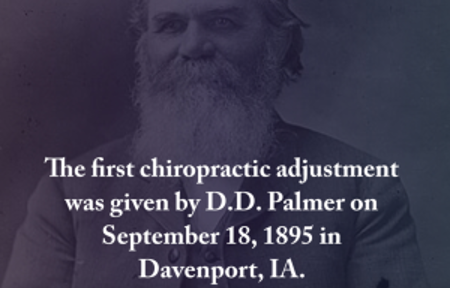Aging Strong: Maximizing Stability to Diminish Fall Risk
The deterioration of skeletal muscle with age (affecting mass, function, strength and stability) has increasingly been referred to as ‘sarcopenia’ and it is one of the most significant causes of functional decline and loss of independence in older adults.
Muscle mass accounts for up to 60% of body mass. As we grow older, muscle mass decreases approximately 3-8% per decade after the age of 30. After the age of 60, the rate of decline is even higher. In fact, by the eighth decade of life up to 50% of muscle mass may be lost.
Maintaining strength and stability is paramount to maintaining independence. A meta-analysis from 2020 that included ten studies concluded that sarcopenia was significantly associated with a higher risk of falls among independent community-dwelling older people.
Skeletal muscle not only contributes to our strength and balance, it is a metabolically active tissue that, when diminished, can have profound consequences for older adults on a variety of levels. It is important to note that a decrease in muscle mass is correlative to an increase in fat mass. This change in body composition is also associated with an increased incidence of insulin resistance in the elderly. These changes in our physiology can affect bony density, joint stiffness and have implications for conditions such as type 2 diabetes, obesity, heart disease and osteoporosis.
Complications with COVID-19
Prolonged quarantines due to COVID-19 created even more of a problem for slips and falls for older adults by facilitating more sedentary lifestyles and severely diminishing normal activity outside of the home. The extended time indoors contributed to a more prevalent decline in muscle mass. Slips and falls were reported as the most common mechanism for hip fracture during the pandemic outbreak.
Studies have revealed that atypical symptoms of COVID-19 also may include: falls, delirium, confusion, dizziness and usual fatigue. Disorientation, loss of strength and dizziness all put older adults at an increased risk for falls. If an otherwise healthy adult becomes dizzy, weak, suffers imbalance or falls down, they should visit their health provider for appropriate testing.
Movement to Build Strength and Resilience
The first step to avoid fall risk is to get moving. To combat decreasing muscle mass we need to use our muscles. Remember that the tendons from skeletal muscle attach to bones. Muscle work creates resistance to help bones remain dense and become stronger to avoid frailty. Your chiropractor can help guide you through any/all of the exercise types listed here.
A regimen of exercises can help keep muscles strong and flexible which also aids in maintaining good balance. Many Medicare-Advantage Plans and some Medicare Supplement Insurance Plans may include a fitness component. Ask your agent if ‘SilverSneakers’ is part of your benefit and if it is, take advantage of what the program offers at your local gym facility. If this is not available to you, take heart that exercises to keep toned muscles don’t require a gym membership or any elaborate equipment and can be performed at home.
Weight-Bearing Exercises: These are performed on your feet. Gravity exerts a force on your bones while you remain upright. Your muscles and tendons are forced to pull on the bones which then stimulates activity in the bone cells. Examples include activities like: dancing, aerobics, hiking, power-walking, jumping rope or climbing stairs.
Strength/Resistance Training: These are accomplished lifting free-weights or using exercise tubing that you pull to create resistance. To tone muscles use low weight/high repetitions. For resistance strength training utilize higher weights with fewer repetitions to target specific areas that may be prone to fracture. If you don’t have weights, start with soup cans from your pantry.
- Perform wall push-ups to use your body weight.
- Pick a stair and stabilize with the railing, raise up and down on the balls of your feet to work your lower legs.
- For your core, lay on your back on your bed and hold your straightened legs in the air. Try laying on your back and moving your legs as though you are on a bike. If you can get on your hands and knees on the floor, practice planks. From hands and knees you can also stretch one leg out straight behind you in the air and hold the position, then switch legs to increase balance and engage deep back muscles.
Isometric Training: These are completely static exercises. This means your muscles contract without your joints actually moving. If you suffer from joint pain or need more low-impact styles of exercise, isometrics are a great option to build bone strength and density, they help to build and maintain muscle mass and improve balance and coordination.
Strategies to Avoid Falls
As we age there are a variety of approaches that we can use to avoid falls:
- Implement a regimen of exercise to stay flexible and maintain muscle strength.
- Maintain optimum nutrition. Ensure ample Vitamin D3, Calcium, Magnesium to support your muscles and bones. Collagen peptides may also contribute to better bone mineral density.
- Invest in comfortable shoes with good support. Custom orthotics are an option available at many chiropractor’s offices.
- Always use a shopping cart at stores to enhance stability.
- Ensure you use handrails for all stairs and install them in the bathroom (in the slippery shower and next to the toilet).
- Rise slowly from bed (whether it is morning or during the night to use the restroom). Rising slowly to a seated position and then waiting a moment will give time for blood flow to reach your brain and avoid the dizziness that could occur from getting up too fast.
Chiropractic care can help you stay strong by maintaining proper joint alignment through neuromusculoskeletal care. Doctors of chiropractic (DCs) also can advise on nutritional support for your muscle, bone and joint health, and can demonstrate exercises that can help you optimize muscle strength, proprioception (balance) and bone health to promote resilience and reduce your risks for slips and falls.












